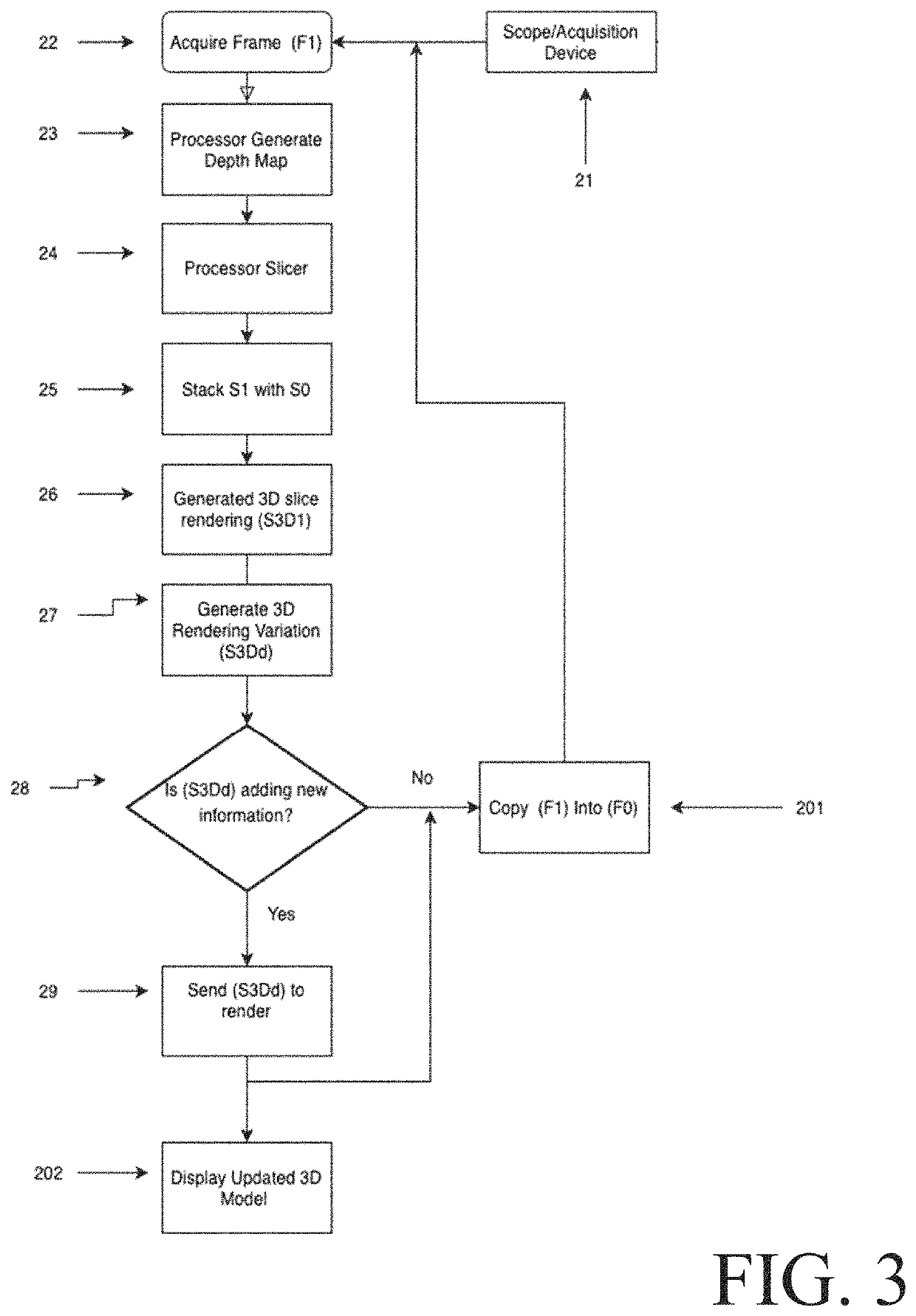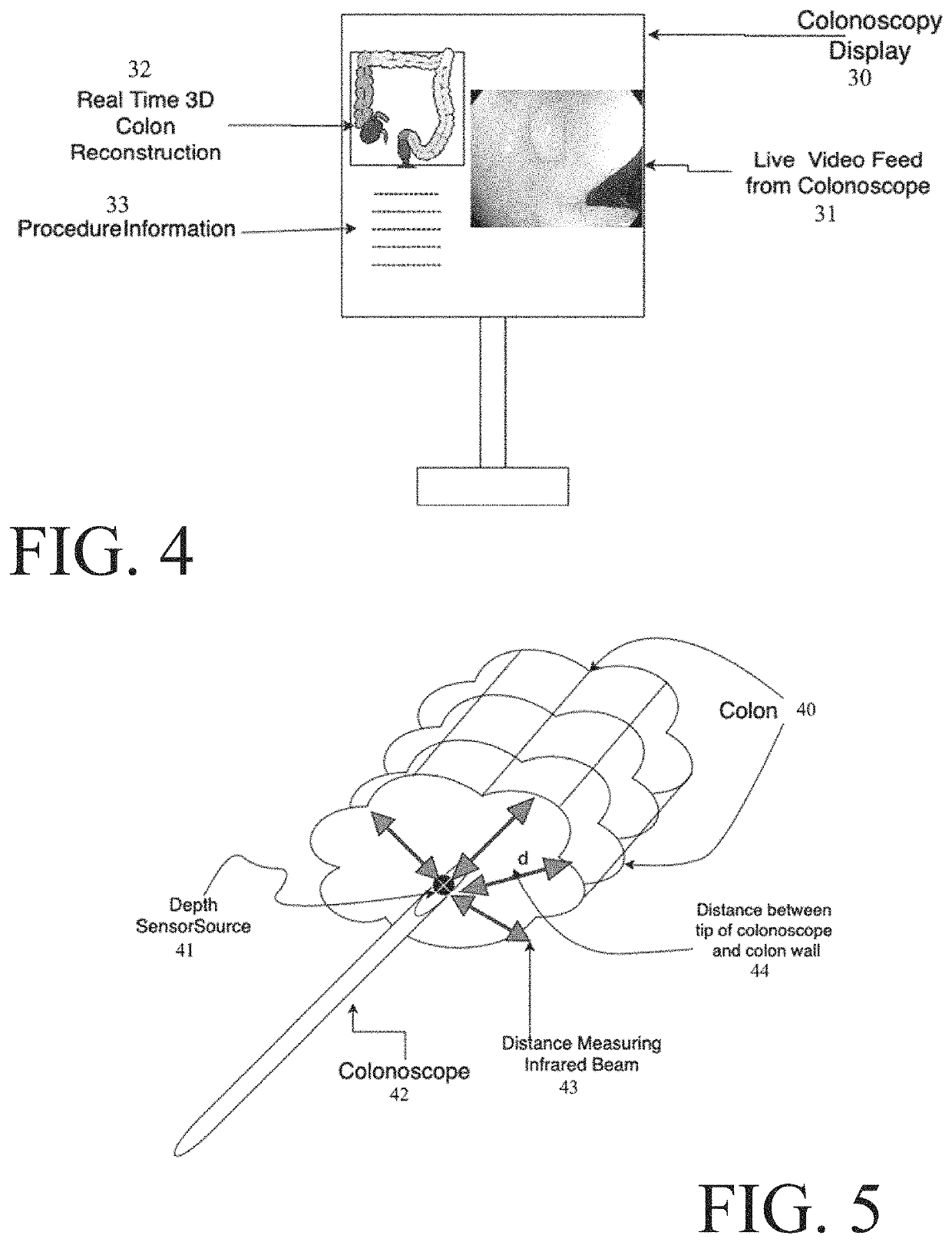One factor is the difficulty of identifying a polyp or
adenoma, even though it may be in the visual field of the colonoscopy image.
Another factor that contributes to the lower than ideal ADR is the difficulty of ensuring that the entire internal surface of the colon has been imaged.
It is difficult for a colonoscopist to remember what has been imaged, and “integrate” those images mentally to conclude that the entire internal surface has been examined.
Thus, it is challenging for the endoscopist to ensure that the entire internal surface of the colon has been visualized.
Failure to visualize the entire internal surface poses a risk of missing potentially harmful polyps or cancers.
One of the challenges of endoscopy, particularly colonoscopy, is that the endoscopist views the structure of interest in real time with only a forward-looking view from the tip of the
endoscope.
Moreover, the colon is a constantly moving organ that lacks rigid boundaries, so
insertion of a colonoscope can cause changes in the shape and configuration of the colon.
Further, the folds in the wall of the colon are constantly moving, thus making it very difficult for an endoscopist to ensure that every fold, nook and cranny is visualized during an examination.
Yet another challenge in endoscopy is that the tip of the endoscope is controlled by a series of knobs and switches located on the hand piece manipulated by the endoscopist.
Accordingly, it is quite difficult for many endoscopists, especially those for whom endoscopy is not part of their daily practice, to translate the image on the screen into necessary
hand movements to re-direct the tip of the endoscope.
Hence, control reference between the tip of the endoscope and the controls on the hand piece may be difficult to maintain.
A limitation of the foregoing approach is that the image presented to the clinician involves interpolation and extrapolation of data from a true imaging modality, resulting in loss of resolution, features and formal
correctness.
Moreover, through-body
imaging modalities, such as X-
ray, CT scanning and MRI have fundamental resolution limits such that small features may be missed.
In general, these historical approaches employ “post
processing” of images after an examination is completed, and cannot provide real
time information while the clinician is performing the examination.
In addition, such previously known 3D reconstructions lack registration with the actual
anatomy, and thus cannot provide precise positional information for a later-
performed procedure.
For example, a clinician performing a procedure while viewing a 3D reconstruction generated during a prior examination, typically will find the live
anatomy to be distorted, moved, squished and / or stretched compared to the prior 3D reconstruction.
For example, fiducial markers created using gamma
radiation have been proposed to provide some level of registration, but that technique exposes a patient to an additional
dose of gamma
radiation, which is itself potentially harmful, as described, for example, in Kleiman N J, Macvittie T J, Aleman B M, Edgar A B, Mabuchi K, Murihead C R,
Shore R E, Wallace W H.
Although that approach has some value, it includes all of the foregoing mentioned limitations, including
low resolution and difficulty in finding an identified area during a later examination.
If a polyp to be removed is identified on
virtual colonoscopy, then at least one
additional procedure is required to remove the polyp, and finding the corresponding area often is challenging for all of the reasons mentioned above.
Those patents do not describe how to solve the problems highlighted above, nor do they suggest systems or methods for generating an evolving 3D or flat 2D image without reference to a prior set of images.
However, the approach described in that article suffers from the limitation that it is trained on
synthetic data from a
physical model, not real-world images, and then validated on a porcine colon but with CT registration.
Such 3D colon reconstruction techniques cannot be used during a procedure, and so do not address the problems sought to be addressed by this disclosure.
That patent does not teach a method or
system for performing the same function on images obtained in real time to provide guidance to an endoscopist during an optical colonoscopy procedure.
Another challenge of colonoscopy involves detection of polyps and other features in real time.
That patent does not address any of the issues of 3D reconstruction, creation of a 2D flat image, or real time registration discussed above.
The authors noted that their system is only able to work in “chunks” because the system fails on large camera motions or deformation.
In addition, no previous system or method provides for an
overlay on such images of AI detected features of interest, such as polyps.
 Login to View More
Login to View More  Login to View More
Login to View More 


